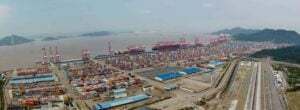Global demand for natural rubber will expand by 7% y-o-y in 2021, according to the Association of Natural Rubber Producing Countries (ANRPC) and the Malaysian Rubber Board (MRB). This rise will be achievable due to increasing demand from the rebounding rubber and tire industries, as well as the pandemic’s increased demand for latex gloves. At the same time, there’s a chance that droughts in Malaysia, Thailand, and Indonesia will result in lower rubber tree yields, threatening a market shortfall.
One of the primary elements driving growth in the natural rubber industry this year is the high demand for latex gloves during the pandemic. Latex gloves and medical equipment exports from Malaysia increased by 95.3 percent in 2020 due to a surge in demand. As the epidemic ends, this factor will fade into the background, but it will continue to have an impact for a few years.
Natural rubber prices soared at the start of 2021 due to increased demand from China’s rubber and tire industries. According to the World Bank, the average price for Rubber RSS3 in May 2021 was $2.29 per kg, up from $1.73 per kg in 2020. Rubber TSR20’s price increased to $1.69 per kg in 2020, with a yearly average of $1.33 per kg.




